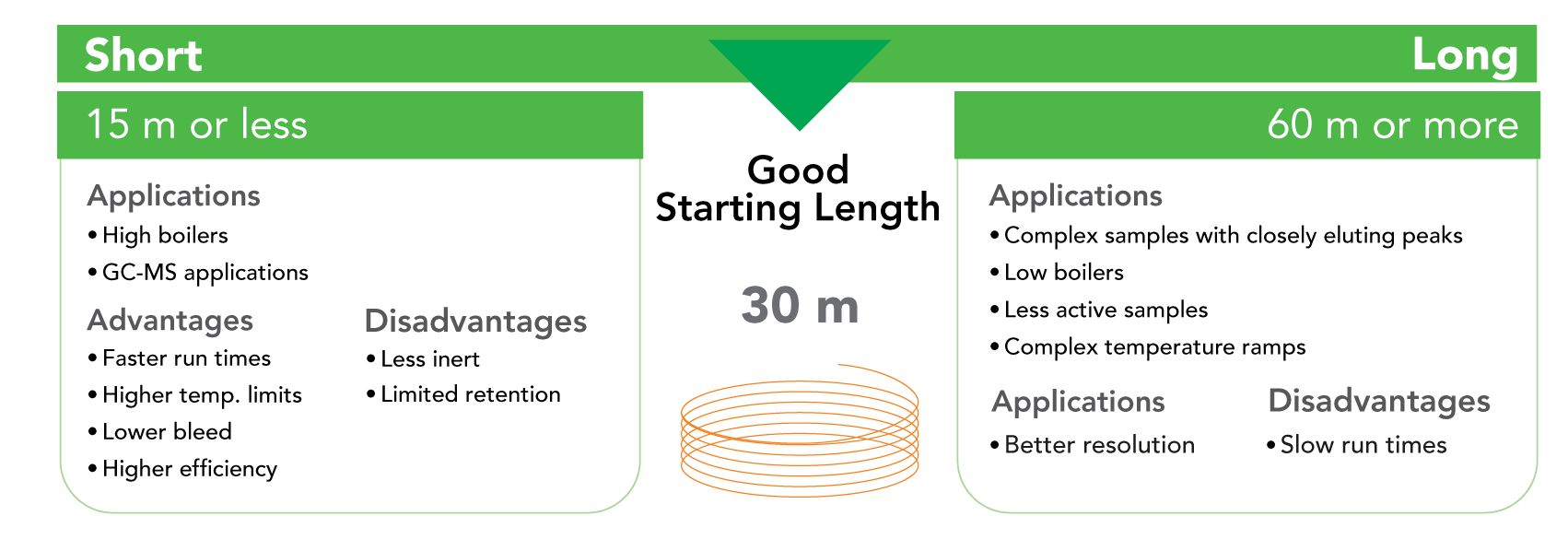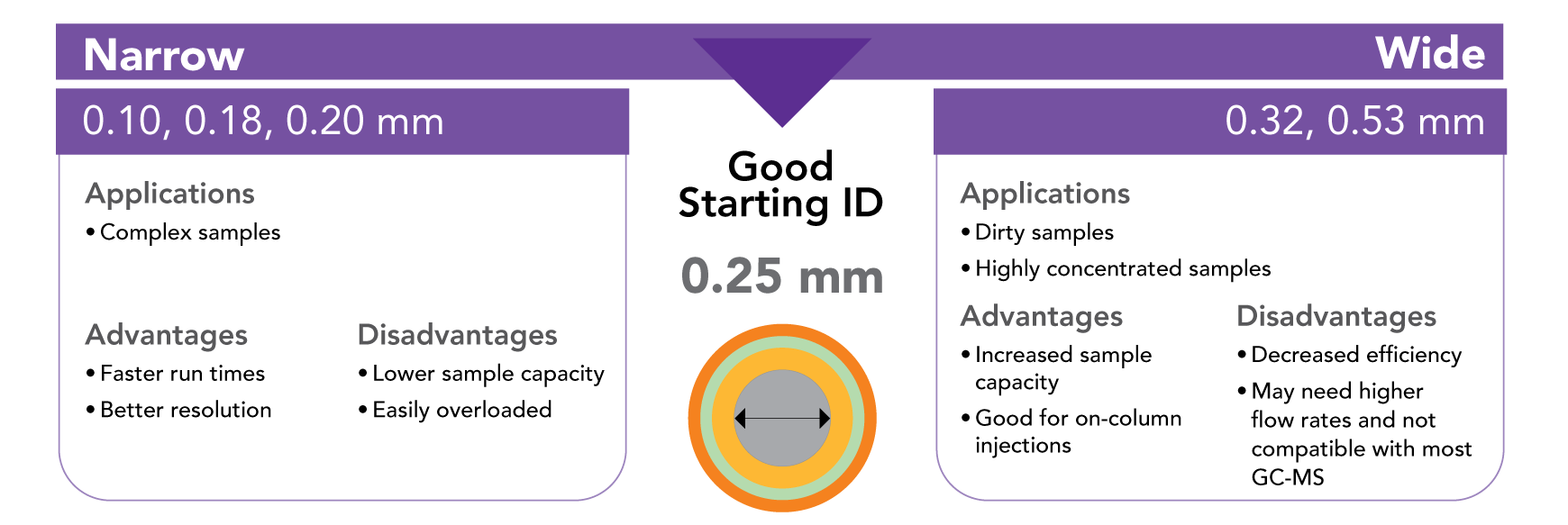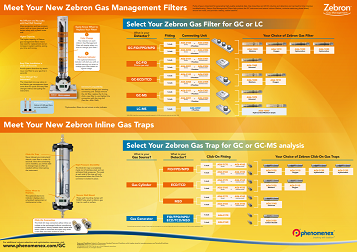GC Technical Tip
Level: Basic
GC Column Selection by Column Dimension
This month’s technical tip focuses on a basic and crucial topic: How to choose the correct GC column dimensions? When starting a new project or when improving an existing method, it’s important to evaluate the contribution that each column dimension (Length, Internal Diameter (ID) and film thickness) brings to the method resolution, sensitivity, and robustness.
Another factor to keep in mind, when investing in GC columns, is to choose a reliable source. Manufacturers perform multiple tests on their columns before they find their way to customers. These tests include resolution of critical pairs, column bleed test, retention factor of probe analytes, efficiency of the column and so on. Make sure to select a manufacturer that provides columns that are individually QC tested.
To maximize efficiency in GC, column length, internal diameter (ID) and film thickness, each has a significant effect. Knowing the effect of column dimensions on a GC separation will help not only to select the right column dimension, but also to pick an alternate dimension to achieve efficient chromatographic separation, as well as possibly reducing the analysis time.
Let’s see how these parameters influence separation in detail.
Column Length
The length of your column affects the rate of resolution improvement. As the length of the column increases, so does the resolution improvement. However, it will also increase run times. Under isothermal conditions, doubling column length only increases resolution by 41 %, but it doubles the run time! Choose a column length that balances efficiency with acceptable run times.

Fig. 1
Internal Diameter
Column internal diameter (ID) has a major impact on both resolution and sample capacity. Unlike column length, using smaller ID columns can actually lead to faster run times, because the column length required with a small ID is often shorter due to increased efficiency.

Fig. 2
Film Thickness
Film thickness determines solute retention and plays an important role in column sample capacity. Thin film columns are faster and provide higher resolution, but lower sample capacity. In most instances, choose the thinnest film possible that still provides adequate retention. When working with active samples, using a slightly thicker film can significantly improve peak shape.

Fig. 3
GC Column and Gas Management Selection Poster
The GC column and gas management selection poster allows GC scientists and chromatographers to choose the correct GC Zebron phase based on polarity, applications and other criteria. In addition, a gas management selection tool will help select the appropriate filter or trap for GC instruments.

GC Column Selector Tool
GC column selection, simplified! Choose a criteria to quickly find your ideal Zebron column based on alternative manufacturer, phase chemistry, official method, or application.
Trademark
Zebron is a trademark of Phenomenex.


